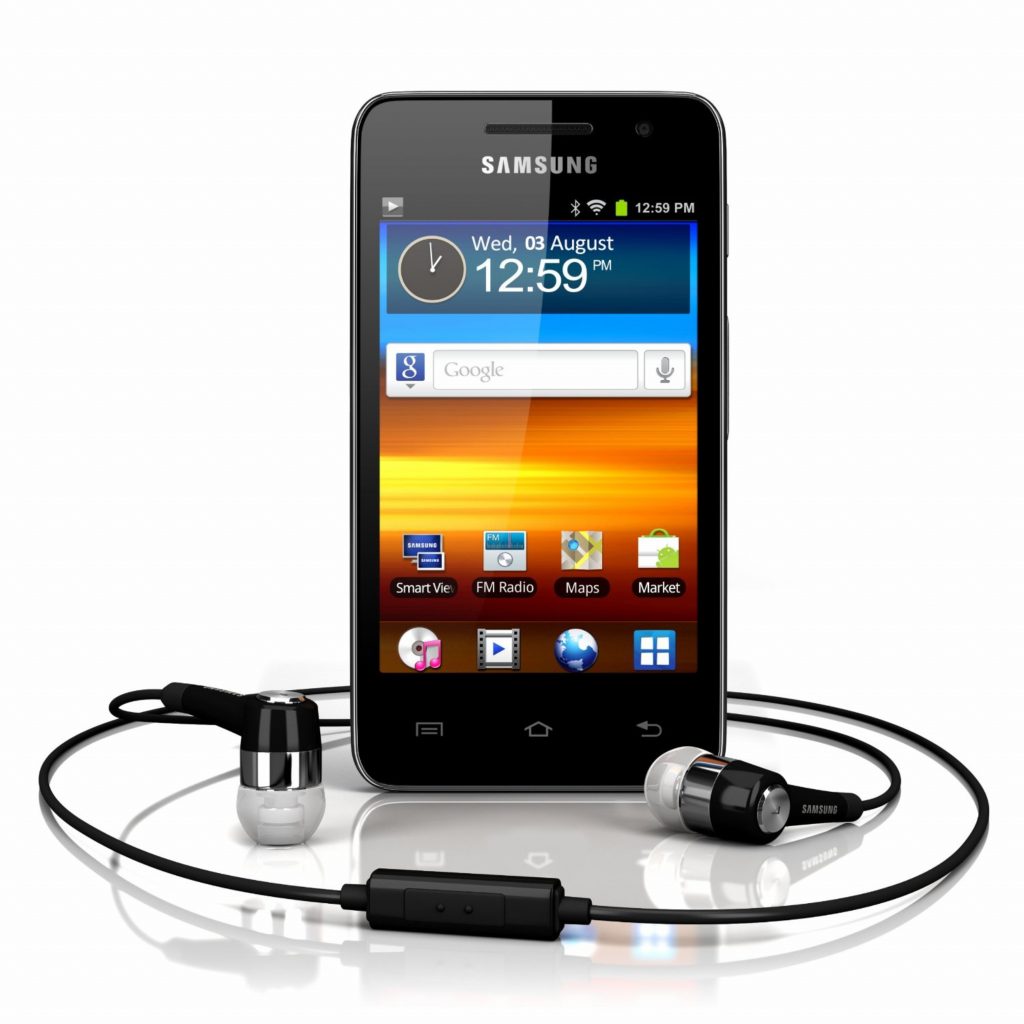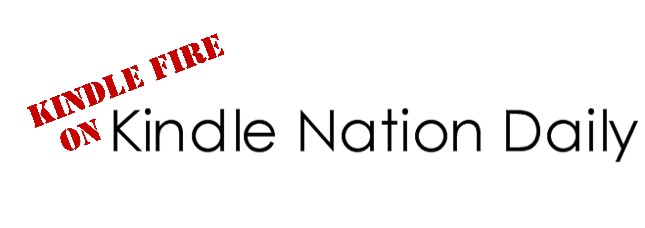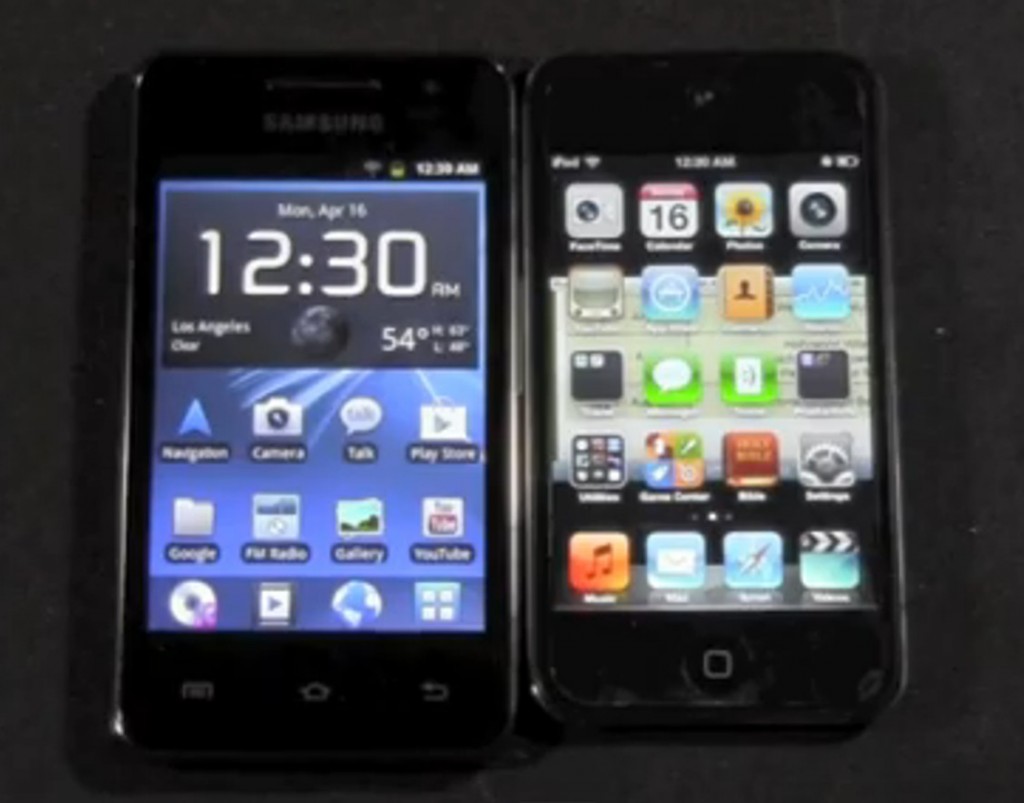Today I continue my series detailing how I freed myself from Apple and iTunes by taking a closer look at the device I chose to replace my iPod, and comparing it directly to the closest iPod competitor. As a reminder, allow me to repeat this from the first post in this series:
 Why am I talking about iTunes and Apple devices on a site dedicated to Amazon’s Kindle Fire? It’s because many—maybe even most—Kindle Fire owners aren’t taking advantage of all the Fire’s music features because they’re already chained to iTunes and Apple devices for digital music purchases, downloads and management. Nobody wants the headache of having to manage separate media libraries for different devices. Many would LOVE to free themselves from their iTunes/Apple shackles and find a digital music/media solution that would work seamlessly across all their computers and portable devices, but fear they can’t do it without major hassle and losing a huge chunk of content or functionality.
Why am I talking about iTunes and Apple devices on a site dedicated to Amazon’s Kindle Fire? It’s because many—maybe even most—Kindle Fire owners aren’t taking advantage of all the Fire’s music features because they’re already chained to iTunes and Apple devices for digital music purchases, downloads and management. Nobody wants the headache of having to manage separate media libraries for different devices. Many would LOVE to free themselves from their iTunes/Apple shackles and find a digital music/media solution that would work seamlessly across all their computers and portable devices, but fear they can’t do it without major hassle and losing a huge chunk of content or functionality.
And that’s what this series is all about: explaining how I succeeded in migrating away from Apple and iTunes without major hassle, and without losing a huge chunk of content or functionality. In addition to today’s post, this series will also include a post comparing iTunes to Amazon’s Cloud Player, as well as a post explaining the specific steps I used to get my music library out of iTunes and into Cloud Player Premium.
Step One: Finding a Player to Rival the iPod
I already knew Amazon offers a Cloud Player app that runs on the Fire, computers and any Android device that can run apps, but I wasn’t sure I’d be able to find an Android device that could truly take the place of my iPod. It would be great to use a single, centralized program like Cloud Player to manage my music library and make it available to all my computers, all my household’s Fire devices and a portable player, and it would be a dream come true to escape from all the expense of Apple and hassles of iTunes, but I didn’t want to give up any of the functionality or convenience I’d come to depend on.
I had an iPod Classic 5th Generation. At the time I bought it, the largest-capacity iPod Touch only had 32GB of storage (which is really only about 27.5 usable GB of storage after you subtract storage for the device’s own software), and my music library is too big for that: roughly 28 GB and growing. I hate having to plan ahead for what music I might want to have available, and sync just a portion of my content at a time. My preference has always been to have my entire library available to me on my portable device at all times. Just recently Apple released an iPod Touch with 64GB, but it retails at around $365.
Samsung Galaxy Player 3.6 vs. iPod Touch: Virtually Identical Devices
I did a LOT of comparison shopping and research, and finally settled on the Samsung Galaxy Player 3.6. Here’s a picture of that device (on the left) side by side with the iPod Touch (picture credit: RICKY the Android Guy) ; as you can see, they’re virtually the same size and look very similar. The Galaxy Player’s screen is actually a tiny bit bigger!
– touchscreen interface
– ability to run apps (Android on the Samsung, Apple on the Touch)
– Bluetooth connectivity
– wifi connectivity
– web browsing
– video player
– social media integration (e.g., Facebook, Twitter, etc.)
– built-in radio tuner
– front and rear-facing cameras, for taking photos and for video chat
– VoIP (internet telephone capability, with specific apps)
– quality display
– stereo sound
– ‘smart’ display that auto-rotates content from portrait to landscape orientation when you tilt the device
– internal GPS system
– rechargeable Lithium Ion battery
There a few more similar details, but you get the picture. In terms of form factor and functionality, these devices are nearly identical. It’s also worth mentioning that Samsung builds some of the hardware for the iPod Touch, including the display, so it should come as no surprise.
The iPod Touch has native digital video camera capability, while the Samsung does not, but since I’m primarily interested in using the device as a music player I don’t really care about that. Similarly, the Galaxy Player comes pre-loaded with the free edition of Office Suite Pro, an app that allows you to work with MS Office files on your device, but this is another feature I won’t be using on my Player.
Another difference that probably belongs in the “con” column for the Touch is that while the iPod Touch is tied only to Apple and iTunes, the Galaxy Player has the whole world of accessory suppliers and Android apps and vendors open to it: Google Play, Amazon App Store, Android Market and plenty more.
Samsung Galaxy Player 3.6 vs. iPod Touch: Price Is A Major Difference
The first and most obvious difference is price. The Samsung Galaxy Player 3.6 typically retails for anywhere from $150 – $180, but if you’re a smart shopper (like me) you can get one for less. Mine cost just $100, thanks to a Black Friday sale.
All of Samsung’s Galaxy Players come with 8GB internal memory (closer to 5.7 in usable storage), but they can also accept micro SD cards of up to 32GB. That means total capacity for the Player can be as high as 40GB (roughly 36GB total in usable storage). Apple devices do not accept memory cards, so the memory capacity you buy is the memory capacity you get.
To do an apples-to-apples comparison (pun intended), the iPod Touch 4th Generation 8GB model retails for $250. The latest 5th Generation model, with 32GB of storage, retails at $299. The latest 64GB model retails at $399. For the sake of this piece, let’s stick with the 32GB model, since it’s the closest match to a Samsung Galaxy Player + a 32GB micro SD card. You can expect to pay around $25 for a 32GB micro SD card, but even taking that and the full retail price of $180 for the Galaxy Player 3.6 into account, you’re still saving close to $100 compared to buying the 32GB Touch.
Galaxy Player Replaces and Improves Upon My iPod
Assuming I could get all my music out of iTunes and into Amazon’s Cloud Player so it would be accessible on the Galaxy Player through Amazon’s Cloud Player app (I could and did – more on that later in this series), the Galaxy Player plus a micro SD card would definitely be equal in functionality and much lower in price than the comparable Apple product.
In the Car / At The Gym / On The Go
I use a portable music player at the gym, while walking my dogs, and in the car almost every time I drive, for both music and audiobooks. My car came with a special iPod cable that allows me to plug in my iPod and have its content pumped through my car stereo speakers while simultaneously keeping the device charged.
I had to buy an $8 stereo audio-out/aux cable to plug the Galaxy Player into my car stereo, and the cable does not have charging capability, but if need be I can use the car charger I already bought for my Fire to keep the Galaxy Player charged in the car on long trips because both devices have the same kind of micro-USB charger port. No more separate cables for different devices!
Another plus: when I used that special iPod cable in my car, it prevented me from accessing the device menu on the iPod: I was limited to using the few functions my car stereo was built to offer. I was pretty much limited to selecting a playlist, album or audiobook before plugging the iPod in, and once it started playing through the stereo I could not easily change to different content. I couldn’t even pause playback, which was very annoying with audiobooks. When my Galaxy Player is plugged in, I still control the device using its own menu. Finally, I have all the same range of control in the car as I have with my portable player everywhere else!
 Galaxy Player Is Better For Audiobooks
Galaxy Player Is Better For Audiobooks
I was in for a very pleasant surprise when it comes to audiobooks. With my iPod, I had to download my Audible books to my computer, import them to iTunes and then sync my iPod with iTunes to get the books onto the device. Since the Galaxy Player runs the Audible app, I don’t have to download anything to my computer or bother with separate import and syncing steps anymore: I just fire up the Audible app when I’m within wifi range, select the title I want to listen to (the app displays my entire Audible library), and download. I can even start playing the book before the download is finished!
Better yet, the Audible app is “smart” enough to keep track of your place in an audiobook across multiple devices. That means I could start listening to a book on the Galaxy Player, then pick up right where I left off on my Fire later on! And if I have the Kindle book with Whispersync for Voice as well, I can even switch to the Kindle edition on my Fire and it will also “know” right where I left off when I was listening to the audiobook. Back in the car or on the go, again, the Audible app “knows” where I left off in the Kindle book. For an audiobook devotee like me, this is a slice of heaven!
Galaxy Player Can Stream Music, iPod Touch Must Download
Whether you’re home or out and about, you can stream your music over any wifi connection to the Galaxy Player via the (free) Amazon MP3 Cloud Player app, you don’t have to download it to the device first. The iPod Touch lacks this capability, anything you want to listen to must be downloaded to the device first. Apple is working on true streaming capability, and it’s out there in ‘beta’ version on various devices and in iTunes Match/iCloud, but it’s not yet perfected. As a reliable service, it’s only really available when you’re at home, within range of where your iTunes library is stored.
What about when you’ll be away from wifi? That’s where the Galaxy Player’s micro SD card capability comes into play. I loaded all of my digital music onto a single 32GB micro SD card so my entire library is available to me at all times. As my library grows, I can break it up across multiple micro SD cards if I like; they’re so small, it will still be easy and convenient to carry all of my music with me whenever I want.
Music Player Functionality: Samsung Wins Again
With the iPod, you’re limited to using its stripped-down version of iTunes on the device. With the Galaxy Player, you can use its own, built-in music player app (which is quite nice and includes advanced equalizer functionality) for listening to music that’s been downloaded to the device, the Amazon MP3 Cloud Player app to stream music or listen to music already downloaded to the device, or use any other compatible Android music player app you like.
In fairness, I have to admit that I miss being able to select and play music by Genre; this iTunes function isn’t there in Amazon’s MP3 Cloud Player app or the built-in Samsung Player app. However, I’m sure you can easily find an Android music player app that would supply this capability, if it’s important to you.
Choosing A Music Library Management App – Why I’m Sticking With Amazon Cloud Player
The major reason I’ve been so desperate to escape from iTunes is the nightmare of moving my music library to a new computer every time an old computer dies, and dealing with the bugs and fallout from iTunes updates. It seems I’m forever having to re-import music files, manually delete duplicates by the thousands, and re-construct playlists iTunes has decided to delete during a migration or upgrade. I NEVER want to go through those frustrating, time-consuming hassles again.
For that reason, while I switch back and forth between the Galaxy Player’s built-in music player app and Amazon’s Cloud Player for music playback, I am only using Amazon’s MP3 Cloud Player app for library management and playlist creation. The Player’s built-in music app, and pretty much any other music player app, will let me create playlists and sort preferences, but I don’t want to lose them when my device must be replaced someday. Since Amazon’s Cloud Player stores all my music, playlists and preferences in the Amazon Cloud, it doesn’t matter which device I use to access the Cloud: all my content and preferences will be there.
Around the House – No Loss In Accessibility or Functionality
There are plenty of speaker docks, some with charging capability, available for Android devices, and they generally cost much less than the comparable accessories designed for iPods. But since I can run Amazon Cloud Player on my Fire HD, which has high-quality stereo speakers built in, I’m finding I just use my Fire HD, propped up in its easel case, for listening to music around the house.
Coming up next in this series: iTunes vs. Amazon Cloud Player: What Will You Gain Or Lose?








I also get books on CDs from my public library, as well as audio e-books that I can download using my library card (I actually haven’t downlosded audo books yet but the librarian assures me that I can.)
I use itunes to read the CDs and load them on my Ipod to listen to when I exercise. Can I do something similar with CDs for the Galaxy?
Yes, you can import the CDs using Windows Media Player, which will convert them to MP3 format and allow you to save the MP3 files on your computer. Then just copy the MP3 files to a micro SD card for use in the Galaxy Player. If you don’t have a micro SD card, you can connect the Galaxy Player to your computer using the USB cable that comes with the device to copy the files to the Player’s internal memory. As for the downloaded audiobooks, it depends on whether or not the files are copy-protected; in all likelihood, they are. But if that’s the case, you wouldn’t be able to use them in iTunes anyway.
Thanks for the info! It is very helpful. I can’t wait to get rid of the ol’ IPOD and I already have extra storage in the Amazon cloud!